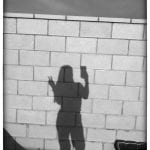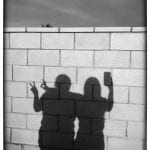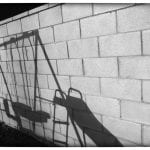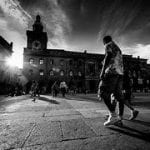There are many things to know about camera lenses but here are 20 things that I have learned about camera lenses. One thing that I have learned is that you can have zooms, primes, macro, super telephoto, and tilt-shift lenses. The second thing that I learned about lenses is that you can also have fisheyes which is a type of lens that gives a 180° field of view and telephoto lenses up to 800mm or more. The third thing that I learned is in order to find the perfect lens is to see what you would like to shoot. The fourth thing that I learned is that there are different lenses that you can use in order to take different pictures such as someone running or someone sitting. The fifth thing that I learned is that less expensive lenses normally have variable apertures which is the zoom and the maximum aperture gets smaller. The sixth thing that I learned is that the more expensive lenses have a fixed aperture which makes it easier. The seventh thing that I learned about lenses is that all major camera and lens manufacturers have a variety of focal lengths to satisfy you and help you take good photos. The eighth thing that I learned about lenses is that for photography for sports you rarely use anything shorter than 70-200 you often use 400mm lenses f/4 lenses. The ninth thing that I learned is that wide angles is good for taking long landscape pictures because it gives a wide expansive view. The tenth thing that I learned about lenses is that a good lens to use for landscape would be ranges from 14mm f/2.8, 16-35 f/2.8, and 24mm f/1.4. The next thing that I learned is that wide lenses should be used when prominent foreground objects are present because many people tend to use it incorrectly. The twelfth thing that I learned is that wide angles are also handy in tight areas, like small rooms, cars, caves, etc. because they tend to give volume into the area. The next thing that I learned is about standard lenses which tend to range from about 35mm up to around 85mm. The fourteenth thing that I learned is that standard lenses will cover moderate wide angles- typically 24mm to 35mm and also moderate telephoto lengths- around 70mm and up to about 105mm. The fifteenth thing that I learned is that standard lenses are good for when you have a bit of room to move around and find a good position to shoot. The next thing that learned is that standard zooms are normally included in many SLR kits that come with lenses. Another thing that I learned about lenses is that some of the popular lenses for standard modes are 18-55mm, 18-135mm, 24-105mm, 24-70mm, and others. The eighteenth thing that I learned is that is that prime lenses are lenses that are just one focal length. The next thing that I learned is that telephoto lenses compress distance which tends to make everything appear closer unlike wide angles which distort perspective and make things look further away. The last thing that I learned about camera lenses is that there are many different lenses that focus on different type of photos that you can take for example some lenses are good for landscape pictures and others are good for moving objects. These are 20 things that I found to be important and that I learned about different types of camera lenses.
Archive | September 2020
Conceptual Self Portrait


The word conceptual is defined as something that is relating to or based on mental concepts but that is not what my understanding of the word conceptual is. The word conceptual has something to do with your mind which leads me to think that the word conceptual has something to do with the mental concepts that has to do with creativity or imagination. The reason why I feel like this has to do with conceptual is because you would have to have imagination in order to have mental concepts to have creativity for your photography. The concept of photography should be creative which you get mental concepts in order to make your photography fun and interesting for the viewers. In conclusion I feel as if the word conceptual means to me photography that has to be creative and imagination which are mental concepts that you get.
The conceptual idea that I am trying to give off to the viewer is my passion for soccer. In the first picture it is me with my feet around my soccer ball. Although the first picture maybe simple it is giving the concept that I play soccer and I obviously like it which is why I chose it to represent me. The reason why I also chose it is because I’ve been playing for 10 years nonstop and has always been something that motivates me to do better. In the first picture it is giving the viewer the understanding that I like to play soccer and that it is something that I enjoy doing. The conceptual idea behind this picture is to show the viewers that soccer is something big in my life and it has impacted my life in a positive matter.
Then in the second picture it is showing a bit more about myself which it is showing a soccer bag from my favorite team America and my feet with the ball again but then in the background it shows my second pair of cleats and a heart. This is giving the conceptual idea that soccer is more then just a hobby it is showing it is a passion something that I may be dedicated to. The concept behind the picture is to show the viewer that soccer is something that I love and its not something that I do as a hobby it is something that I see as a passion and I’m dedicated to. I put my all into soccer which is the reason on why I used soccer as something to represent who I am.

I chose this photo that was taken by Cindy Sherman because it seems as if all the clowns are hysterically laughing and then in the background there is one clown that is upset. Although i am not able to see the face clearly that’s what i got from this photo from the body language that it is sending through the photo. Which I find ironic because clowns are known as people who make everybody laugh and are always happy and hysterically laughing. But what I got from this picture is that nobody knows the truth behind clowns no one knows if deep down behind there act they’re sad, I read that Cindy Sherman said about her clown series that, “Clowns are sad, but they’re also psychotically, hysterically happy.” which i agree with because clowns are known to be sad but put up an act for others which may seem a bit psychotic. This is the reason why I chose this picture and this series because i found it ironic on how she demonstrated the emotions behind the clowns and how she photographed them.
Alternative Camera Angles
- AP: 1.7 ISO:20 S:1/869
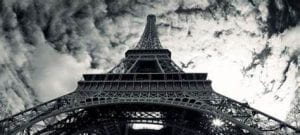
In this picture you can see that the photographer tends to take the picture at a low angle. This picture stood out to me because not only is the angle of the camera making it more interesting but the angle tends to give it a mood. The angle is showing the bottom of the Eiffel tower to the top which shows the dark moody sky. This tends to give off the mood of darkness or sadness which sets the meaning for the photo. One thing that i really like about this picture is that it was taken directly underneath the Eiffel tower which is showing you from the bottom all the way to the top to give a view as if you are there looking straight up. This gives the affect of the object seeming bigger in the picture then it may really be in real life. These are a few things in which I found interesting that were related to the picture and the angle that the picture was taken.
The link to the picture is
https://th.bing.com/th/id/OIP.QwknjThrdSiP7UMgcocHTAHaDV?pid=Api&rs=1
Depth of Field
There are many ways to explain what depth of field is but for beginners like myself its better to explain in a simpler way. The meaning of depth of field to me is a good sharpness on a photo that will appear and focus on the main focus of the picture. In all the pictures that are taken there will be a certain area in the front or in the back that will appear better to show the main focus. There are two different types of ways you can show depth of field in your photos which these two ways are by using shallow or deeper depth of field. These two are similar to each other but have one thing different that make them two different ways to show depth of field. Shallow depth of field is when you may have very small zones of focus which is called shallow depth of field. Then deep depth is when the camera may have a very large zone of focus which is called deep depth of field. This is what I understood that was depth of field and the two ways that it could be used for photography.
There are three main factors on how your depth of field could get affected. The three main factors that would affect your depth of field would be aperture, the distance between your lenses and your subject, then it would be the focal length of the lens on your camera. The depth of length will affect your picture by focusing on one thing which will blur out the background or the front part of the picture. This tends to show the focus of the picture and shows the main focus of the picture. The depth of field not only does this to picture up close, but it does it for pictures from far away. For example, if you were to take a picture of the sky it would focus on the sky and bring out the sky more to add more color into it and make it look better. This is what the depth of field would do to a picture it tends to bring out the pictures more and focuses more on the main focus to bring out that object more.
- AP:1.7 ISO:20 S:1/810
- AP: 1.7 ISO:100 S: 1/4
These are the pictures that I first took which the first is shallow and the second is deeper.

AP:1.7 ISO:20 S:1/810

AP: 1.7 ISO:20 S1/322
The first picture is one that I found online which is shallow and the second picture is deeper.
Shadows And Light
- AP: 1.7 ISO:40 S: 1/501
- AP: 1.7 ISO:40 S: 1/501
- AP: 1.7 ISO:40 S: 1/501

I feel as if this picture is a good representation of how shadow is used and shown in a picture. The reason why I chose it is because the shadow is being focused onto the women’s eye which is showing you the main focus of the photo. The picture is showing the women’s eye and making the rest of her body into the shadow to catch the viewers eye and see her eye which is giving a blank expression. The women in the picture seems to be giving a blank expression which is giving me a sad mood. The reason why I feel as if this picture is representing a sad emotion is because she seems as if she’s drained or overall just upset. But at the same time, she is giving off an expression as if she doesn’t care or mad. This is the reason why I chose this picture because it shows the focus on the eye and shadows everything and that’s why I feel as if it’s a good representation.
Apart from the picture representing shadow and showing a good way of how it was used to portray sadness and anger it also showed me how the photographer used the three main controls. The photographer was able to use all three controls and have the right amount of light to put into the picture. The photographer seems to be going for a gloomy mood, so they didn’t use much lighting and gave it an effect to focus on the women’s eye. Which makes her eye stand out to give of a facial expression used by using her eye which gave off a sad emotion. The photographer used the right amount of light which comes from the aperture, ISO, and shutter speed. This helped the photographer explain the photo through the lighting, effects, and the women’s eye. This is why I chose the picture because it was a good representation of not only the shadow that was shown but also the use of aperture. ISO, and shutter speed which makes the lighting be good.
What Every Beginner Needs To Know
There are many things you need to know as a beginner but here are the main 13 things that you would need to know as a beginner for photography. The first is setting the exposure using the histogram which helps to show the pixels arranged from dark to light. This shows you hard evidence if you have any images that are too dark or too bright for the sensor to capture the light correctly. The second important part is that you can take the picture raw which means that you can take the picture on normal without needing to change the IOS, aperture, or shutter speed. But color, contrast, and detail are affected by this compression and will give you full capabilities of your camera. The third one is selecting and focusing the points manually which your camera must help you with the autofocus. Which by going into this mode the camera will be automatically changed to focus to what you are focusing your camera on. The fourth one is learning how to use all the AF modes one-shot AF, Servo AF and AI Autofocus which these modes all have different uses. The AI- Servo is good for taking picture of things that are moving fast to capture a perfect moment in a picture and the others also do the same but in different ways. The fifth important thing to do as a beginner in photography is to have the aperture which changes the exposure and lighting of the picture. This helps you to figure out one of the controls out of the three to have good lighting. The sixth important thing for a beginner is knowing what the shutter speed is used for which it is used to manage how much lighting goes into the camera for the picture. This helps to show how much light will be exposed into the camera which shows how bright the picture will be. The seventh thing you need to know as a beginner is to know about the control motion blur which gives a blur affect to the picture. Normally this can be done by changing the shutter speed which you would need to put it on the slowest speed to give off that effect. The eighth important thing is needing to know how to manually white balance which you use to have a white object as the reference. This control helps to guide the camera on how white the object would be and to focus and take a good picture of it. The ninth important thing for a beginner to know is drive modes which there are three of them: single shot, continuous low and continuous high and these help you to frame and take different types of pictures but are rarely used. There is also metering modes which all have different jobs, but all behave the same way. The tenth important part is knowing how to use the ISO which helps with the lighting. The ISO is higher when there is less light, and it goes lower when there is lighter to work with. The eleventh important part is knowing how to use the Auto IOS which will help you when using handheld. This will help your picture have the right amount of light exposure and be a pretty picture. The twelfth important part for a beginner to know would be exposure compensation which will tell your camera to increase or decrease the exposure. This helps to help your camera have enough exposure and see how much you have see if you would need to increase it or decrease it. The last important thing that a beginner would need to know for photography would be how to use the manual exposure. The manual exposure is the full control of knowing how to use the ISO, aperture, and the shudder speed which helps you to take a perfect picture. These are thirteen of the main things you would need to know in order to call yourself a real photographer and be able to properly use a camera.
Photo Shoot on Texture
- AP: 1.7 ISO:20 S:1/135
- AP: 1.7 ISO:20 S:1/796
- AP:1.7 ISO:20 S:1/335

The reason why I chose this picture of a leaf with rain drops on it is because this picture tends to show good texture. The texture of the photo is showing that the main focus of the picture is the leaf with the raindrops on top of it. It is mainly focusing on that to show the viewers that that’s the main focus and it blurs the background to make the leaf pop out more. This is showing the reader not only the leaf with the rain drops but it is showing that its the main focus and showing the texture of the picture to make the leaf pop out and the raindrops pop out more then the leaf. This picture is a good representation of texture because it is showing you the main focus of the picture and this is the reason why I chose it to show a good representation of good texture.
Another reason why I chose this picture is because this picture not only the texture of the picture but it shows how the photographer had to change the speeds on the picture and managed to pull it off and make a beautiful picture. The photographer not only had to focus on the main part of the picture but is also needing to figure out the shutter speed, IOS, and aperture. This helps the photographer have the perfect amount of lighting which helps have enough light for the picture so it can be a clear picture. In this case the photographer didn’t put much lighting but put a bit to give a gloomy effect on the picture which shows an emotion of darkness or sadness. This is the reason why I chose this picture but not only does it show a good representation of texture but it shows a good way on how the photographer used the speeds to make this picture look beautiful.
Composition
- The composition in this picture is the rule of thirds which is focusing on the important part of the picture which is the beautiful sky and the house.
- The composition in this picture is capturing the moment when the sand is going in the air which focuses the camera on the person throwing it and makes it into a beautiful picture.
- The composition whuch was used for this picture is to focus on the person and was given a dark moody affect. This gives off a dark and moody affect to the picture.
- The composition in this picture is the affect to blur everything in the background which helps focus on the dog and is in grey to give off a dark mood.
- The composition on this picture gives off a blur affect which helps focus on the leaf to show what the main focus of the picture is.
- The composition used is centered composition which is centered on the main frame that theyre supposed to get which is capturing the moment of the water falling with some flowers.
- The composition used is centered composition which is centered on the rock to show the rock and the background of the sky.
- The composition used is centered composition to show the two bridges together and the background of the bright blue water with buildings in the background.
- The composition used in this photo is foreground which is to show the importance of the area which in this picture it is showing the bridge and the clouds to give off a gloomy effect.
- The composition in this picture is blur because it is blurring the background and focusing on the raindrops which is the main focus.
- The composition used in this picture would be fill the frame which is just zoomed into the cow to capture the picture of just the cow in between the fence.
- The composition used in this picture would be frame within the frame which is capturing the moment of everyone walking and the background of the building in black and white to give off a gloomy affect to the picture.






